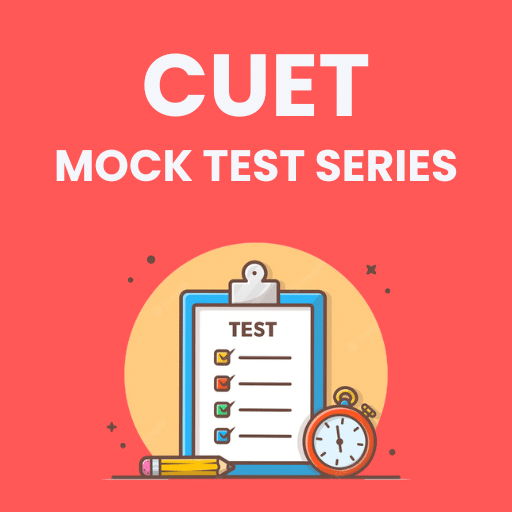Generic Competitive Strategies | Management Optional Notes for UPSC PDF Download
| Table of contents |

|
| Introduction |

|
| Cost Leadership |

|
| Differentiation Strategy |

|
| Focus Strategy |

|
| Focus strategy has following advantages |

|
Introduction
Porter's generic strategies elucidate how a company seeks a competitive advantage within its chosen market scope. Competitive strategy encompasses various approaches employed by a company to secure a competitive edge, such as maintaining current market share, acquiring new market share, identifying and exploiting new market opportunities, meeting customer wants and needs, delivering superior value in products or services, positioning and differentiating the product, optimizing the manipulation of the marketing mix, and achieving goals in the competitive marketplace. It is widely acknowledged that these generic strategies can empower an organization to navigate competitive forces in the industry and outperform others. Michael Porter has classified competitive strategies into cost leadership, differentiation, or market segmentation (Lynch, 2000).
Cost Leadership
Cost Leadership Strategy:
- Goal: Achieve cost advantages by producing large quantities at low prices.
- Benefits: Although profit margins may be slim, the strategy aims for high overall profits due to the large volume of sales.
- Definition: Being the industry's lowest-cost producer, meaning having the lowest average cost compared to competitors.
Market Independence:
- Cost leadership is not dependent on the type of market structure.
Defense Against Powerful Buyers:
- Protection: Cost leadership safeguards the company from buyers exerting strong influence on prices.
- Limitation: Buyers can only push prices down to the level of the next most efficient competitor.
Protection Against Powerful Suppliers:
- Flexibility: Cost leadership allows the company to absorb increased input costs, providing an advantage over competitors lacking this flexibility.
Entry Barriers:
- Challenge for Rivals: Achieving economies of scale, a key aspect of cost leadership, requires substantial production capacity, making entry into the industry costly for potential competitors.
- Prohibitive Costs: The need for significant capacity acts as a barrier, deterring many potential rivals from entering the market.
Differentiation Strategy
Differentiation Strategy:
- Definition: Creating a unique product or service through branding or internal skills.
- Goal: Stand out in the market with something special that's hard for others to copy, often linked to the company's brand.
- Unique Offering: Differentiation means making something that everyone in the industry sees as special, carving out the company's own niche in the market.
Approaches to Differentiation:
- Design Differences
- Brand Image
- Number of Features
- New Technology
- Combining two or more of these aspects can enhance differentiation.
Benefits of Differentiation:
- Protection from Competition: Builds customer loyalty, making them less likely to switch based on price changes.
- Reduces Substitutes: Uniqueness creates barriers, making it harder for competitors to offer alternatives, resulting in higher profits.
- Dealing with Suppliers: Higher profits allow for better negotiation power with suppliers.
- Decreased Buyer Power: Customers have fewer options, reducing their bargaining power.
Scope Comparison:
- Market Segmentation: Limited scope compared to cost leadership and differentiation, which can work on a broader scale.
Porter's Insight:
- Caution Against Combining Strategies: Trying to be both low-cost and unique might not work well in a competitive environment.
- Emphasis on Specialization: Porter suggests focusing on one strategy rather than trying to do both.
Focus Strategy
- Concentrating on specific market segments rather than trying to appeal to everyone.
- Also Known As: Niche strategy, where the company targets a few specific markets.
- Approach: Tailoring marketing efforts to meet the needs of these specialized markets.
Suitability and Applicability:
- Ideal for Small Firms: Particularly suitable for smaller companies, but can be adopted by any size of the company.
- Targeted Marketing: By focusing on narrow market segments, the company aims to better serve the needs of those specific customers.
Benefits of Focus Strategy:
- Less Competition: Selecting markets with fewer substitutes or weaker competition can lead to higher returns.
- Competitive Advantage: Focus strategy emphasizes effectiveness in meeting customer needs rather than just efficiency.
Segmentation in Focus Strategy:
- Cost Focus: Concentrating on cost leadership within targeted segments.
- Focus Differentiation: Offering unique products or services within specific market niches.
 |
Download the notes
Generic Competitive Strategies
|
Download as PDF |
Focus strategy has following advantages
Improved Customer Satisfaction:
- Strategy Focus: By using the focus strategy, a company zeroes in on specific customer groups with unique needs.
- Better Fulfillment: Tailoring marketing efforts to these specific customers helps the company meet their needs more effectively.
Advantages for Small Businesses:
- Ideal for Small Businesses: Focus strategy works well for small businesses that lack the resources to compete broadly in the industry.
- Targeted Approach: Small businesses benefit from focusing on specific niches often overlooked by larger companies.
Competitive Edge:
- Brand and Innovation: Companies using focus strategy seek a competitive edge through branding and innovative products rather than just efficiency.
- Less Substitutes: Focusing on specific markets that have fewer alternatives allows for higher returns on the initial investment.
Generic Competitive Strategies

Generic Strategy Characteristics:
- Applicable to All: Generic strategies can be used by any type of company, whether they are in manufacturing, services, or non-profit sectors.
- Versatility: These strategies can be applied in different industry environments based on a company's consistent choices regarding products, target markets, and unique strengths.
Drawbacks of Generic Strategies
1. Risk of Cost Leadership:
Cost leadership involves positioning a company as the lowest-cost producer or service provider in the market. However, this strategy is not without its challenges:
Technological Change: The rapid pace of technological advancements can render past investments and knowledge obsolete. Companies may find that the methods they relied on for cost reduction are no longer effective due to technological innovations.
Imitation by Late Entrants: New competitors entering the market may have the advantage of learning from established firms' cost reduction strategies. They can quickly emulate these strategies, eroding the cost advantage of the original company.
Neglecting Customer Needs: The relentless pursuit of cost minimization may lead companies to overlook customer preferences and needs. Focusing solely on cutting costs may result in products or services that fail to meet customer expectations.
Unforeseen Inflation: Unexpected increases in costs, such as raw material prices or labor wages, can diminish the firm's ability to maintain its cost leadership position. Inflationary pressures may erode the cost advantages achieved through efficient operations.
2. Risk of Differentiation:
Differentiation strategy aims to set a company apart from its competitors by offering unique products, services, or features. However, this strategy also presents certain risks:
Cost Gap Challenge: If the price difference between the differentiated product or service and lower-cost alternatives becomes too significant, customers may prioritize cost savings over additional features or brand loyalty.
Imitation: Competitors may attempt to replicate the unique features or attributes that differentiate a company's offerings. As a result, the perceived differentiation may diminish over time, leading to increased competition and price pressure.
Loss of Competitive Edge: If a company fails to sustain its differentiation efforts or falls behind in innovation, lower-cost competitors may gain market share by offering comparable products or services at a lower price.
3. Risk of Focus:
Focus strategy involves targeting a specific market segment or niche with tailored products or services. Despite its benefits, focus strategy also presents several risks:
Rising Costs: As costs escalate for the focused firm compared to larger competitors, the price advantage achieved through focus may diminish. Customers may opt for broader product offerings from competitors, undermining the firm's competitive position.
Loss of Uniqueness: Over time, perceived differences between the focused firm's offerings and those of competitors may diminish, reducing the effectiveness of the focus strategy in capturing and retaining customers.
Competitive Challenges: Competitors may identify submarkets within the target market of the focused firm and develop strategies to compete effectively within those segments. This can lead to increased competition and erosion of the focal firm's market share.
Establishing Generic Competitive Strategies:
SWOT Analysis:
- Identify Strengths, Weaknesses, Opportunities, and Threats for each strategy.
- Eliminate strategies that aren't suitable.
Industry Analysis:
- Understand the market where the business operates.
- Gather insights to position the company effectively.
Comparison and Selection:
- Match SWOT analysis with industry insights.
- Choose the most practical options.
In Summary, Porter's Generic Strategy Matrix suggests three choices for firms: cost leadership, differentiation, and focus. Cost leadership focuses on being the cheapest, differentiation on offering unique quality, and focus targets a specific market segment. While these strategies offer advantages, they also come with risks that businesses must carefully consider. Creating an effective strategy involves analyzing strengths, weaknesses, market conditions, and selecting the best approach for long-term success.
FAQs on Generic Competitive Strategies - Management Optional Notes for UPSC
| 1. What are the three generic competitive strategies? |  |
| 2. What is the cost leadership strategy? |  |
| 3. What is the differentiation strategy? |  |
| 4. What is the focus strategy? |  |
| 5. What are the advantages of the focus strategy? |  |



























